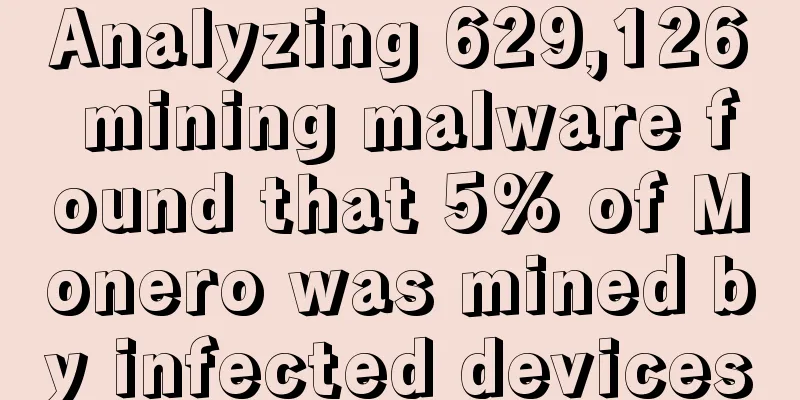Analyzing 629,126 mining malware found that 5% of Monero was mined by infected devices

|
In the report released yesterday, the team detected and analyzed 629,126 malicious program samples. This analysis did not involve browser miners (cryptojacking), but only infected desktop and server devices since June last year. Researchers said that 84% of the malicious program samples detected and analyzed this time were for Monero cryptocurrency, which is the most popular cryptocurrency for malicious organizations. By querying nine mining pools (which allow third parties to query their payment statistics), the researchers found 2,341 Monero addresses in 5,316,663 malware samples. The team estimates that these hacker groups have obtained more than $108 million worth of Monero coins in the past year. Palo Alto Networks also pointed out that the criminal gang has used infected devices to maliciously mine about 798,613.33 Monero coins (XMR). In the past year, the computing power of infected devices has reached 19,503,823.54 hashes per second, accounting for 2% of the entire computing power of the Monero network. |
Recommend
What is the character and fate of a woman with a "川" palm?
In our lives, most people’s hand lines will inter...
What does a mole above the left eyebrow mean?
In fact, judging from the mole, if there is a mol...
When will you get rich?
When will you get rich? An old saying goes: "...
Is Litecoin's halving in August worth looking forward to? A comprehensive guide to Litecoin
On June 22, Bitcoin broke through the $10,000 mar...
How does a man with sparse eyebrows look like?
The eyes are a very important part of the five fa...
Will Bitcoin halving bring about a bull market? Wu Jihan vs. Jiang Zhuoer
The New Year has just arrived, but the new corona...
Hand shape predicts your personality traits
Hand shape predicts your personality traits Every...
Let the profits run! All the reasons for losing money can be found in this article
As I said in my last analysis, some of this has a...
What facial features do lucky men have in common?
What facial features do lucky men have in common?...
Why is IPFS worth investing in? What is its value?
When the mainnet was launched, IPFS was even more...
What does Mars in the natal house represent?
Mars, also known as the Great Killer, is yang in ...
What does a mole on the middle finger of the right hand mean? Is it good for a woman to have a mole on the middle finger of her right hand?
Most of the moles on the palm are relatively good...
How to analyze women's career
In today's fast-paced era, many women no long...
Is the worst over? Cryptocurrency surges, funds snap up cheap chips
The decline that began last week got even worse o...
The face that indicates good luck in love
The face that indicates good luck in love Skin to...









